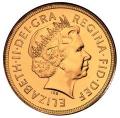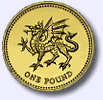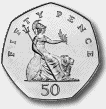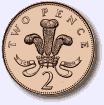| The Very Highest Quality Information... |
| The Current British Coinage System |
|

|
Basic System
Since 1971, we have used a decimal system, with 100 pence to the pound.

|

|
Intermediate Coin Denominations

|

|

|

|

|

|
Higher Denominations
There is only one other coin denomination which is currently used commonly in circulation, having a higher value than the £1 coin:-
Two Pounds (£2).
With the issue of a new lighter weight, bi-metallic two pound coin in 1997, they are now becoming quite common in circulation
Other Rare Sightings
There is a Five Pound (£5) coin, known as a crown, which has been issued since 1990, but they are rarely seen in circulation.
The crown originally had a face value of five shillings, and since decimalisation, twenty five (25) pence. Pre 1990 crowns are only seen very rarely in circulation.
Please see the numerous other pages on our site for further information about crowns and five pound coins.
Summary
| Coin | Value | Written |
| Five Pounds | 5 Pounds | £5 |
| Two Pounds | 2 Pounds | £2 |
| Fifty Pence | 50 Pence | 50p. |
| Twenty Pence | 20 Pence | 20p. |
| Ten Pence | 10 Pence | 10p. |
| Five Pence | 5 Pence | 5p. |
| Two Pence | 2 Pence | 2p. |
| One Penny | 1 Penny | 1p. |
Finally...
A strange corruption has befallen the English language since decimalisation. The d for penny or pence was always pronounced as "penny" or "pence", but now the p for penny is commonly called "pea" rather than penny or pence. During the changeover period of decimalisation, this was reasonably understandable, although the new pennies were called "new penny" or "new pence" as they had a different value from the old penny, so there was no need to further differentiate. Since the old pennies were withdrawn in February 1971, there have been almost 30 years to adjust.
There were of course 20 shillings to the pound, twelve pence to the shilling, and therefore 240 pence to the pound.
You may wish to visit some of our other pages:
Specifications of Current British Coins
Value of my Coin. What's it Worth?
Inscriptions on British Coins
Common Names of British Coins. What's a Tanner?
Please let us know if you find this table useful, you could always sign our visitors book.
| ...at the Lowest Possible Price |
|
32 - 36 Harrowside, Blackpool, Lancashire, FY4 1RJ, England. Telephone (44) - (0) 1253 - 343081 ; Fax 408058; E-mail: The URL for our main page is: https://24carat.co.uk | Chard(1964) Ltd |